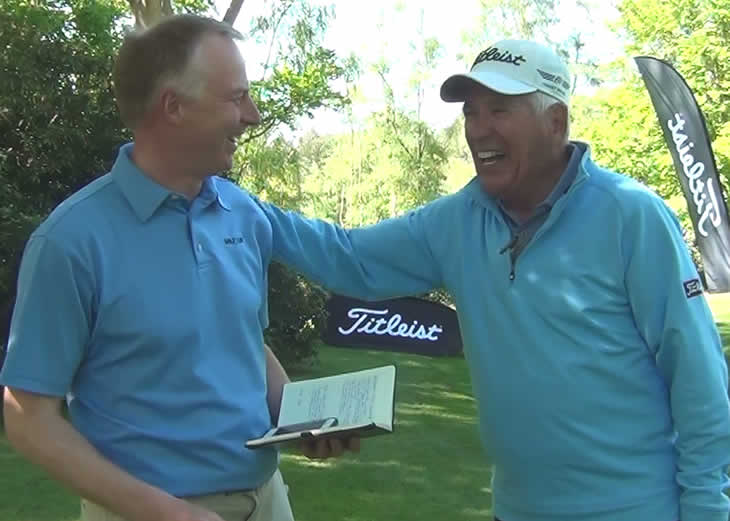One name synonymous with wedges is Bob Vokey. Titleist's master wedge craftsman opened his first Custom Golf Shop in 1976 and has been hand grinding wedges ever since.
Bob is one of the most engaging and knowledgeable people in the industry, so it was a pleasure to interview him again when he was over from the USA on whirlwind wedge tour.
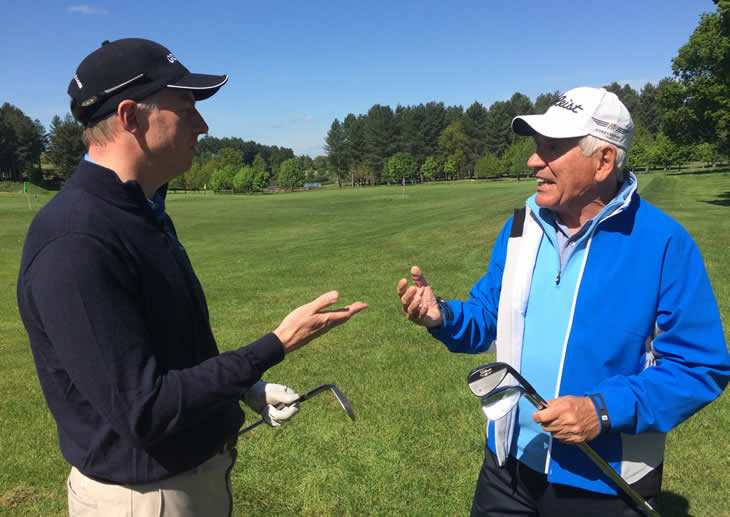
Has the 2010 groove rule change been good for golf and what do you think has been the biggest effect?
Initially I was a little bit against the changes, but at Titleist we always follow the rules of golf and since its implementation I’ve seen different things.
What is really interesting is that it has brought back what I call the trajectory game. It promoted the trajectory and feel parts of the game that I know I grew up with and that a lot of older players grew up with before the advent of spin.
This is compared to the younger players who grew up with spin, which led to the wedge game becoming very mechanical and very spin biased. I think it was those players who had a little more trouble adjusting to what I call 'Before Spin Milled' type shots.
How much spin do the grooves generate now, compared to how much spin they generated pre-2010?
It depends on the product, but I can tell you that we lost around 3000 rpm on 50 yard shots out of the rough resulting in an extra run out of about 15-20 feet on the greens.
But through all this process I’ve worked with our great team of engineers and we’ve worked on the problem together with all the testing and feedback from our Tour Players and we have gained back the consistency on all the different types of shot that you are going to hit. You have to remember it is not always about spin, because you don’t actually need spin in a lot of shots as it can actually hurt you.
Between the SM4 to the SM5 wedge this hard work has seen us gain back pretty close to 1500 rpm’s on the 50 yard shot from the rough. Will we ever get to the 3000? No, I don’t think so and I don’t think the USGA and R&A will let us.
Do you think you actually need to get back to that level?
No, I don’t think so. It is amazing how the pro’s adjusted to the changes and we really don’t hear much about it anymore. What it did was bring back a lot of the good short game players who benefited from the changes compared to the bomb and gouge guys, but even those guys still had the advantage of their higher club head speeds that helped them put some of that lost spin back.
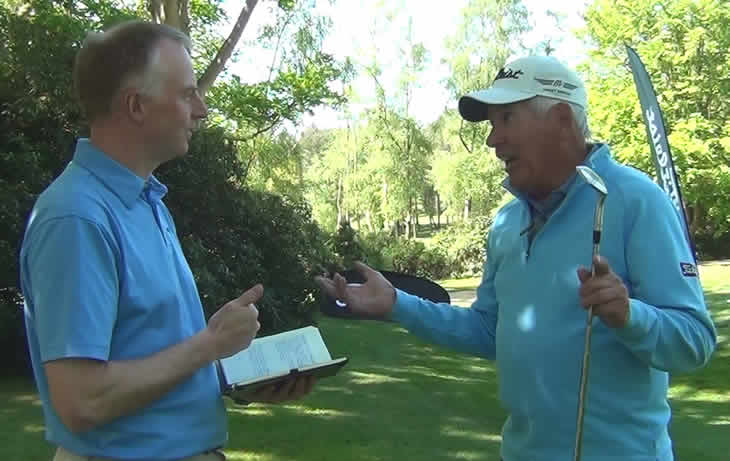
So what do you see now as the biggest challenge to improve on your wedges?
Every time I have the challenge to design a new wedge I am always like an open book. I look to see what the challenges are for all golfers, not just from the Tour, but everyday golfers and club pro’s, find out what the little things they are struggling with now and see how we can help.
We have seen from the testing we’ve done that we are able to answer a lot of the challenges by offering a range of different grinds that are able to recreate a lot of the shots that previously players used the spin to create.
We can compensate for a lot of the shots that we used to spin to create, as now those shots are being done with trajectory and by having a grind that enables the player with a lot less effort and a much higher percentage to execute that shot.
We are increasingly seeing more specific wedge shafts, for example from True Temper and the KBS Tour wedge shaft, so what are the differences and what should people be looking for to help them with their wedge game?
Really there are no bad shafts out there anymore. We have used the same True Temper shafts for our wedges for 18 years and we haven’t seen any shaft that can outperform it. You may see some shafts that help the execution of certain shots, for example flop shots, and some Tour pros may want a shaft for those specific shots. The variation just allows for different trajectories, but that is also specific to a player’s technique too.
What would you say are the different strengths and weaknesses between what a Tour player wants from a wedge and what an amateur is looking for?
It’s always been our blueprint to develop wedges with the feedback from Tour players to create all of our Titleist wedges and then make those wedges available to all players so the wedges that the Tour players are using are the same as are available to every golfer who get to benefit from all of the development and feedback gained from the Tour players in the design process.
Then the biggest difference is of course the talent level. Remember these guys are good and their technique makes it a lot easier to produce all of the shots they need.
The average golfer by comparison sometimes does not put the strike on the ball that the club was designed for as consistently, but that is why we are putting extra effort into training our fitters to help recognise the faults and the individual styles of all golfers so that they can be fitted with the wedges that best fit their games.
Most people are told to put their hands ahead with wedges, but is this actually a good thing in terms of the combination of shaft lean and bounce?
It’s not correct. Bounce is the angle from the leading edge to the trailing edge and it keeps the club moving through the shot and it also offers resistance to digging.
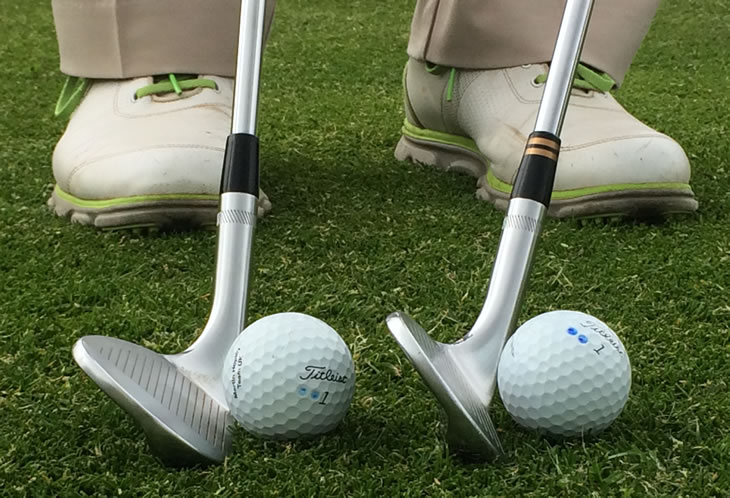
So you can visualise if you lean the shaft forwards by moving you hands ahead you are removing one or two degrees of the bounce and the shaft lean will result in you digging into the ground and catching the ball heavy.
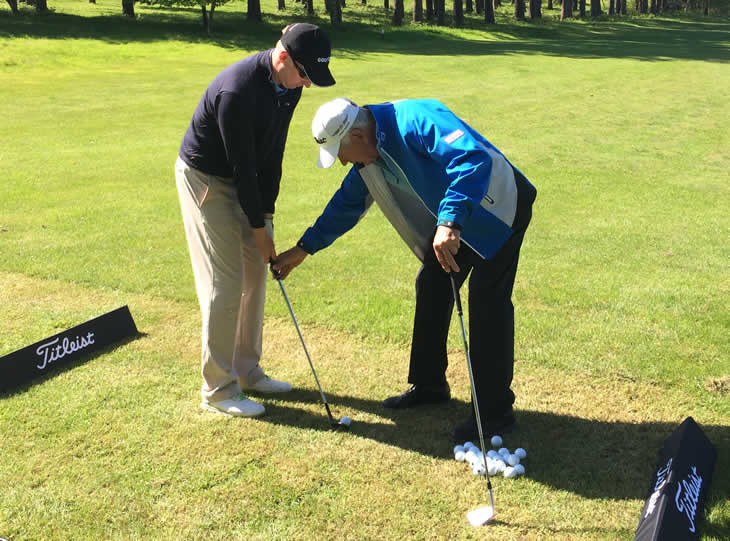
In terms of the durability of grooves how many rounds would you expect a wedge to last for amateur players?
We use a special heat treating process that has almost doubled what I call the use of the wedge, in other words we have delayed the spin decay. For the average weekend golfer I would say that the grooves will stay optimum for 70-80 rounds depending on how often they have hit hard range balls especially from sandy turf or bunkers which will wear the grooves a bit more.
Do the different lighter or darker finishes on wedge impact on the deterioration?
There is a lot of perception of that, but with all the tests we have done there is no difference at all. I think perhaps the raw wedge feels a little bit softer to people, but that is not the case.
Without giving any secrets away, in what direction do you see the future of wedges going?
We’re very proud of what we are in the process of doing right now. We saw that the biggest change can be through education and we are trying to educate our partners and teaching them how to fit our customers with the correct wedge for them.
We think there is a huge gap here as being fit with the right wedge is going to help golfers hit the shots they want to hit and need to hit much more consistently.
Click here to read about my wedge grind and bounce fitting with Bob Vokey.
